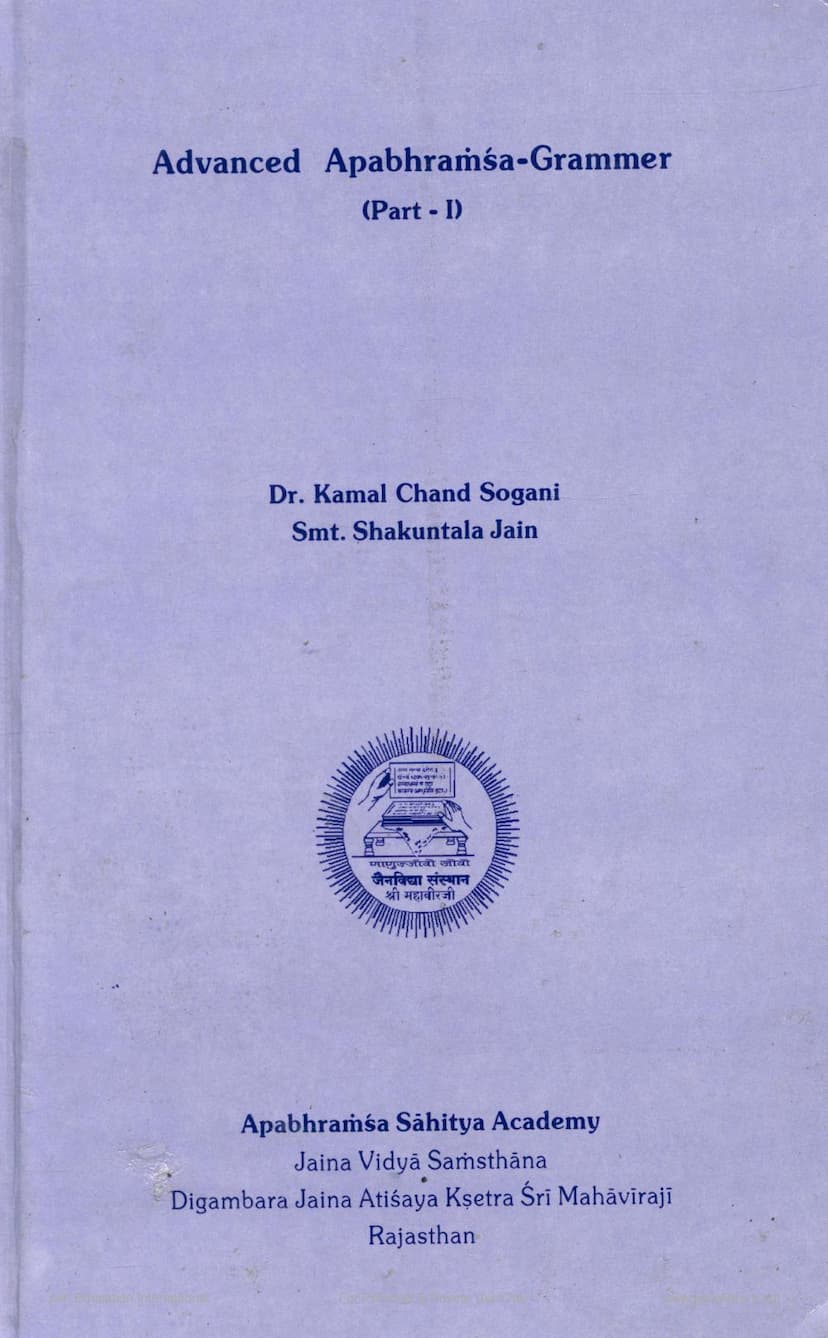Advanced Apbhramsa Grammer Part 01
Added to library: September 1, 2025

Summary
This document is the first part of "Advanced Apabhramsa Grammar" by Dr. Kamal Chand Sogani and Smt. Shakuntala Jain, published by Apabhramsa Sahitya Academy in association with Jaina Vidya Samsthāna, Digambara Jaina Atiśaya Kșetra Śrī Mahāviraji, Rajasthan.
The book aims to provide a comprehensive understanding of Apabhramsa grammar, building upon the foundations laid by earlier Prakrit languages. It highlights Apabhramsa's significance as a rich Indo-Aryan language that served as a lingua franca in Northern India from the 6th century AD and is the ancestor of many modern Indian languages. The authors emphasize the intimate relationship between Prakrit, Apabhramsa, and Hindi, stressing the importance of studying these languages for a proper comprehension of Hindi literature's development.
The Apabhramsa Sahitya Academy, established in 1988, offers correspondence courses in Prakrit and Apabhramsa and has published various related materials. This book is intended for English-speaking students to facilitate their learning of Apabhramsa.
The book is structured into several sections:
- Introduction: Discusses the alphabets, numbers, genders, persons, cases, verbs, tenses, and word types in Apabhramsa.
- Method of Analysis of Sutras: Explains that the grammatical rules are presented in the sutra style, similar to Sanskrit grammar, and that understanding these sutras requires a basic knowledge of Sanskrit, Hindi, or English. It also outlines a five-step analysis process for each sutra: Combination (sandhi), Inflection (vibhakti), literal translation, contextual translation, and examples with notes.
- Declension of Nouns (Section 1): This extensive section details the grammatical rules (sutras) governing the declension of nouns in Apabhramsa, covering various case endings and transformations for masculine, feminine, and neuter nouns. It includes detailed examples of specific nouns like "Deva," "Hari," "Kamala," "Kahā," and "Dheņu."
- Declension of Pronouns (Section 2): This section follows a similar structure to the noun declension, focusing on the various case endings and transformations for pronouns such as "Savva," "Ta," "Ja," "Ka," "Eta," "Ima," "Amu," "Aya," "Amha," "Tumha," and "Kavana." It also provides examples to illustrate these grammatical principles.
- Appendices:
- Appendix-1 Declensional Forms: Provides detailed tables for the declension of various nouns and pronouns, categorized by gender and ending type, as discussed in the preceding sections.
- Appendix-2 Rules of Combination Utilised in the Sutras: Explains the rules of vowel and consonant combination (sandhi) and visarga combination that are applied in the formation of words within the sutras.
- Appendix-3 Summary of the Grammatical analysis of Sutras: A tabular summary of each sutra, detailing its number, combination rules, original words, declension rules, and the inflected words.
- Reference Books: A bibliography of relevant texts on Prakrit and Apabhramsa grammar.
The book is dedicated to Late Smt. Kamla Sogani. The authors express gratitude to Smt. Lynna Dhanani for her suggestions and to Jaipur Printers Pvt. Ltd. for the publication. The entire work is for personal and private use only.